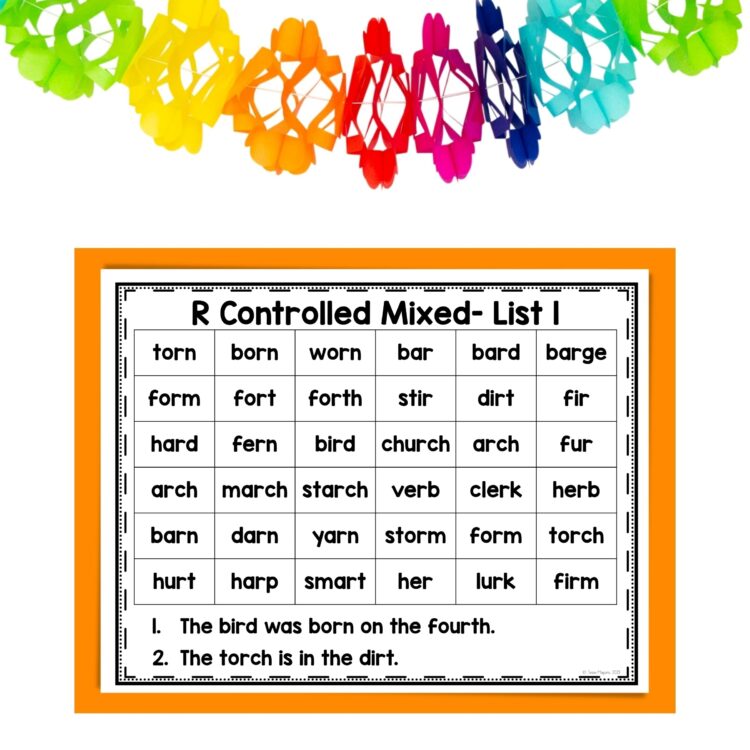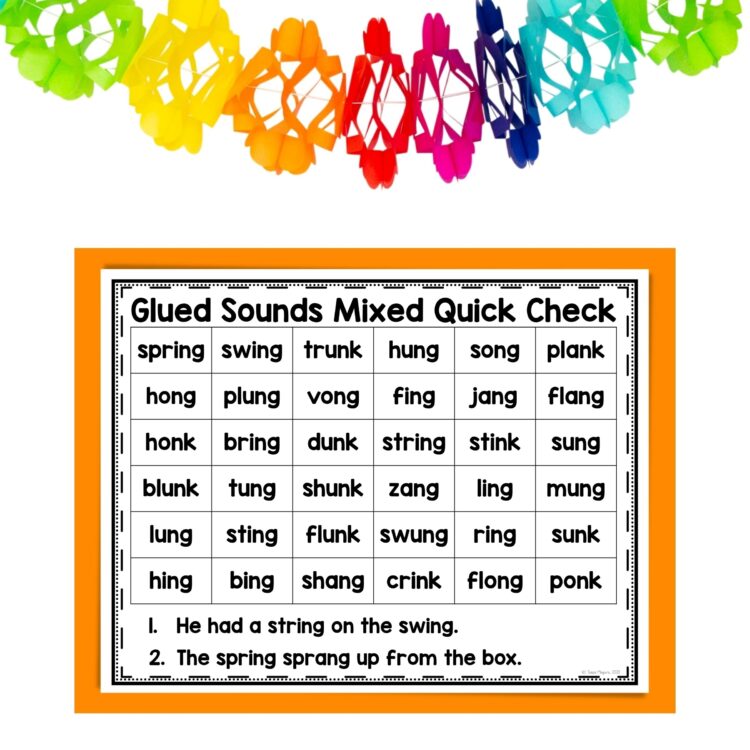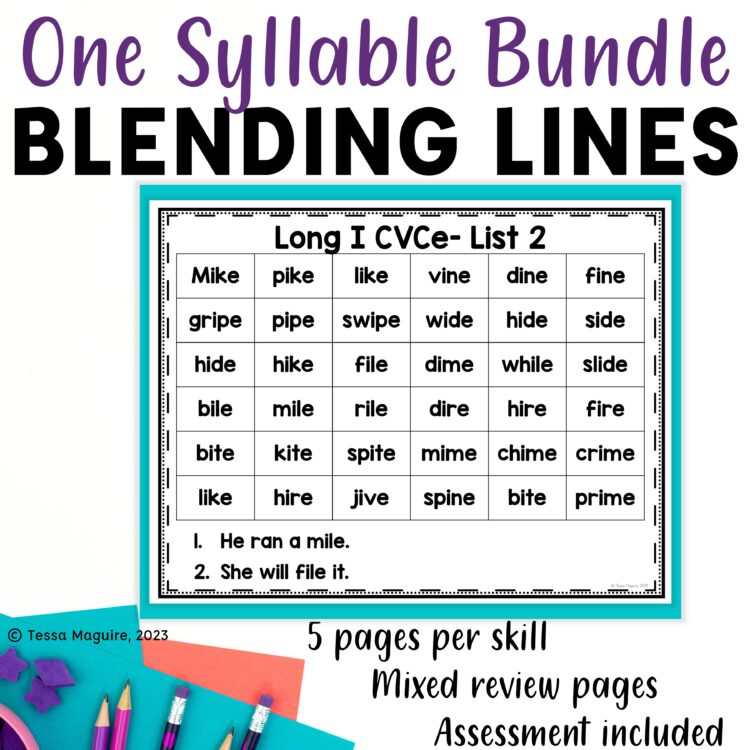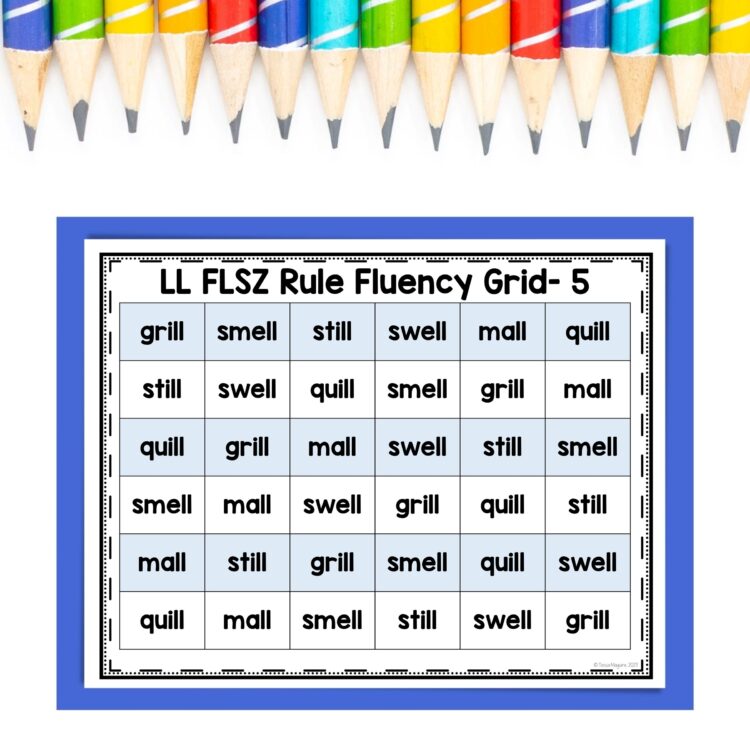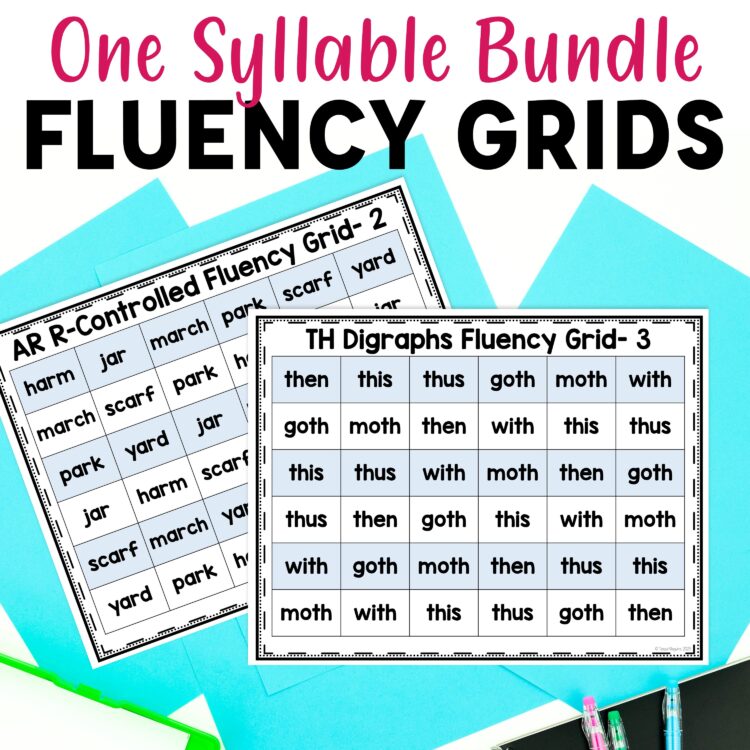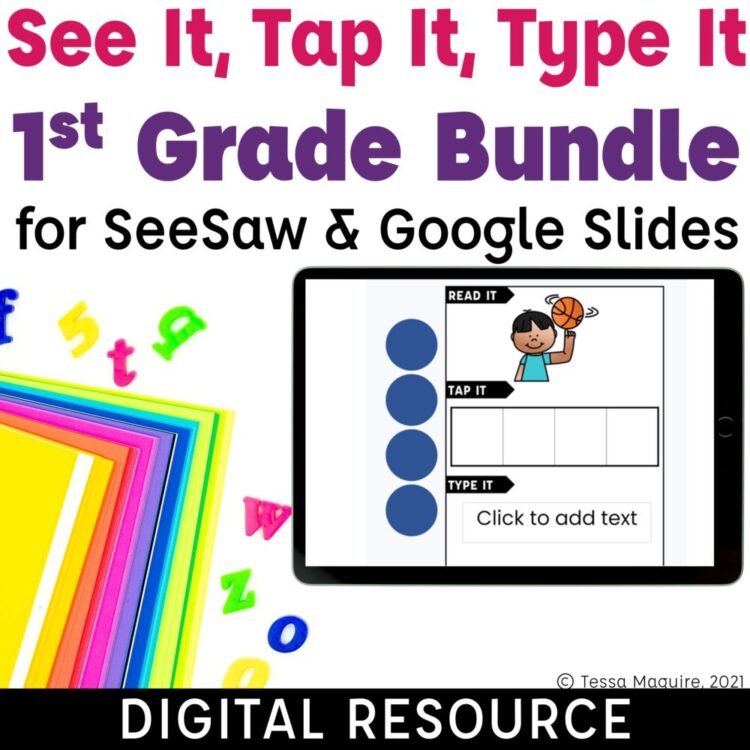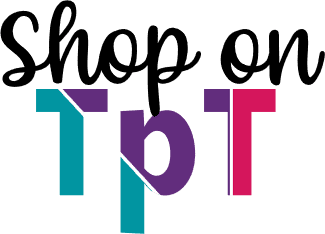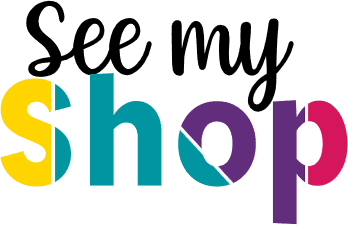© 2024 Tales from Outside the Classroom ● All Rights Reserved
5 Decoding Activities to Practice Phonics Skills
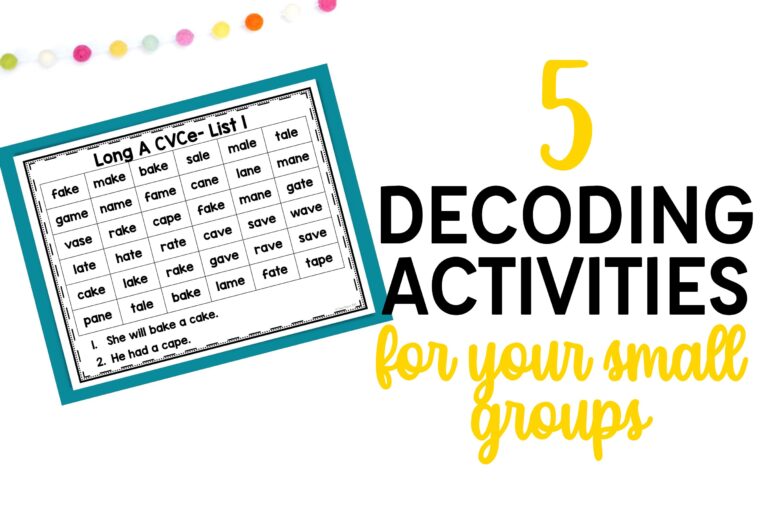
For some students, depending on their phase of reading development, it can take a significant amount of time before a word is orthographically mapped and stored in their long-term memory for quick retrieval. Meaning, it’s recognized on sight and would be considered a “sight word“. Along the way, students need many exposures and repetitions with words to build the needed connections for automatic word reading. Students need opportunities to practice and review skills well after we have taught them. I like to use a variety of decoding activities to give students ongoing practice reading words. I find that changing the format of how we practice keeps students engaged in our work and excited to join our small groups. Most of these activities are ones I incorporate into my phonics-based small group work, but, these phonics activities absolutely could be used in other settings.
Word Reading Drills
Probably my favorite way to build decoding practice into my small groups is through word reading drills. I started using these when I was an interventionist, not knowing they are a key component of some programs. I loved the phonics & embedded phonemic awareness practice my students got with them, and I’ve continued to use them in my phonics groups since. Word reading drills are nearly completely customizable to the skill you are wanting to practice based on how you set them up.
How do you do word reading drills?
I have a quick 1-minute video tutorial I shared on my Facebook page. I walk through how intentionally targeting “l and r blends” based on how I set the cards up. With a student struggling with these 2 liquid sounds, this set up allowed me to spend a few minutes targeting her individual need within my small group.
Please note: I said “phonological awareness” due to recording nerves. I definitely meant phonemic! 🙂
Depending on the level the students are, I may begin by running through each letter and reviewing its sound before placing the cards out. The cards can be piled for any skills you may want to practice. I have used this for VC and CVC words, CVCe, blends, digraphs, and r-controlled vowels just by my careful letter placement.
To do it, it’s quite simple. Have students read the shown word, then change only one letter at a time to practice reading the next word. The goal is for students to be able to read the new word automatically without needing to re-decode it. However, it does not happen automatically for many students and they need to practice decoding the entire new word. This is one of my favorite decoding activities because the words change every single time it’s done.
A couple things to remember that I mention at the end of the video are regarding letter placement. You need to be intentional, especially in the final position as some letters modify vowel sounds. Here’s a quick, non-comprehensive list of things you should consider when building your letter card stacks with a focus on CVC words. Depending on the skill you’re practicing, there are other considerations.
C- changes to /s/ when followed by i, e, y; c is also uncommon at end of words
G- changes to /j/ when followed by i, e, y; I place in final position.
H- I place in initial position for CVC words to practice the typical sound.
J- Words in English do not end in j so I place in initial position.
K- I place in initial position since the /k/ at the end of a syllable is typically spelled “ck”
Q- I don’t incorporate Q in this activity.
V- Words in English do not end inv so I place in initial position.
W- I place in initial position since it impacts vowels.
X- I place in final position only or leave off.
Y- I place in initial position since it impacts vowels.
Blending Lines
What are blending lines?
Blending lines are groups of words that students sound out and blend together focused on a particular phonics skill. They are created to allow students to practice the current skill alongside review of previously learned skills. Blending lines give students the opportunity to interact with words with the targeted skill in isolation before reading a longer connected text. They are also a great tool for focusing on similar, or minimal contrast, words, which helps promote orthographic mapping long-term. I first heard of blending lines in the Wiley Blevins book A Fresh Look at Phonics (affiliate link- I earn a small portion of anything purchased). I detail all about Blending Lines, where they come from, and how they’re constructed, in their own post.
Blending lines are designed to be a quick activity- no more than 5 minutes. This makes them perfect for ongoing review of previously learned skills. They’re also great for decoding practice on your targeted phonics skill, especially with the connected, decodable sentences. Because there’s not much involved, they’re great to give to a classroom assistant, or to send home as homework with parent support.
How are blending lines set up?
I offer a One-Syllable Words Blending Lines Bundle. I create my blending lines intentionally to focus on minimal contrast words, some lesser utility words, and even nonsense words. I have had many students that I thought to be strong readers (decoders) that really had built a large bank of words in their memory. When presented with an unknown word, these students often struggled to decode them. I like to incorporate lesser utility words to gauge students’ true decoding abilities.
Each phonics skill is broken down into targeted practice for more refined practice, and then also includes review within the set. For example, CVC words are broken down by vowel sound; and digraphs are broken down by individual digraphs. Then, everything is put together for the mixed review. They are great as the review portion of your small groups once you have moved on to a new phonics skill. Each target skill includes the following within each blending lines set:
- 4 pages of blending lines with real words
- 1 page of blending lines with nonsense words
- 1 student-facing assessment page
- 1 assessment recording sheet
Each page is designed with patterns in sets of 2 or 3 words at a time within the first 2 lines. These minimal contrast words words focus student attention on the differences between the words and promote orthographic mapping. These visually similar words also help build students’ phonemic awareness, which can lead to better reading skills overall.
The third line is always a mix of words with the target skill so students practice the skill without the similar patterns initially practiced. The pattern repeats for lines 4-6 to give students practice with another set of words. Finally, two lines of decodable, connected text are included for student application (with the exception of the nonsense word page).
A set of nonsense words is included for intentional practice for those students that need additional reinforcement to slow down and be attentive to print. While I don’t promote frequent practice with nonsense words, I have found their use helpful with specific kiddos. For that reason, I do include a nonsense word page.
There is also an assessment with each target skill. The assessment does not follow the repetitive pattern so you are able to truly assess students’ decoding abilities. The assessment includes 3 lines of real words and 3 lines of nonsense words, in addition to reading decodable sentences. These quick check assessments provide formative feedback to help guide your instruction. Are students stronger when reading the sentences with context? Do students struggle with only the nonsense words? The variety of presentation helps identify students’ strengths and weaknesses to help you know your next steps.
Take a closer look at the Bundle of One-Syllable Words Decoding Lines to see each skill currently included in the bundle. With this bundle, your small group word reading skills are covered for the year!
Fluency Grids
What are fluency grids?
Fluency grids are just like they sound: grids used to build fluency. They include repetition with a handful of words (or letters) to build exposure and fluency. Typically, though I have seen some variations, 5-7 words are chosen and then repeated in each of the rows, just in a different order. The grid format allows for multiple exposures to the same word, often in the context of other similar words. Because the words are being read quickly in isolation, it encourages automaticity rather than sound-by-sound reading.
Fluency grids can be used during whole class phonics instruction on a display. Words can be read chorally, making the activity accessible for most students. For students not yet working independently at grade level, they are getting practice with the skill in a low-risk manner.
They also make great practice during small groups! Give each student their own copy of the grid and choose how you want to practice. Students can choral read together or take turns reading lines. Students can whisper read with you listening in to each student throughout the reads. I like to use a variety of reading methods just to keep things engaging, though my favorite is having students quietly whisper as I listen in. This helps me hear how each student is practicing and give on-the-support when it’s needed. I love to use fluency grids as my continual review of our most recently learned skills before diving into the focus of the day.
You can read more about fluency grids and how to use them in my How to Use Fluency Grids post.
I currently offer fluency grids for many phonics skills in one-syllable words and am working on additional skills for my small groups. Each fluency grid is specifically created to work on the targeted phonics skill without incorporating skills that are still unknown.
Between my Fluency Grids & Blending Lines, I have my decoding practice within my small groups covered with absolutely no extra planning! I love having these ready to go, stored in folders by phonics skill, so I can just grab and copy for each week. Having a set routine saves me time planning and helps
Roll & Read
I am not sure who first came up with Roll & Read but it’s a pretty widely used activity to practice specific skills. It’s quite simple! Words (or anything really!) are placed into columns from 1-6 with numbers or visual dice displays on top. Students roll one dice, and read one word from the top of that number’s column and then color it in. Then, students roll the dice again. Students continue until one column is full. At that point, you can have them stop, or they can continue rolling until time is up or they have finished. The dice component adds a bit of novelty to the activity to help keep students’ engaged. It gives students opportunities to decode a large number of words with the targeted phonics skill, making it a high utility activity. UFLI Foundations has Roll & Reads available in the UFLI Foundations Toolbox. These match their scope & sequence, so they may not match yours exactly. They are a super easy to grab to add to your collection! Check out my post on Top Sites for Phonics Resources to find other places you can look for supplementary materials.
Phonics Games
I love to use games in my small groups, but also as center activities while I’m meeting with other groups. Because students practicing away from me doesn’t guarantee proficient reading, I usually use games as review of previously learned phonics skills. This helps ensure students are practicing skills they’ve already learned, focusing on building fluency. I introduce the game formats within my small groups so students know how to play when it’s added to centers. Our time together in small groups is quite limited, so games are a great way for students to practice decoding independently.
Draw a Card Games
I first heard about “BANG” in 2006-ish as a way to practice NWF from DIBELS. After finding a few resources online, I started creating similar games to practice decoding within my phonics groups. Over a few years, I had created several versions for each skill. These were the early days of my product creation (and weren’t the most visually appealing). I’ve updated them here and there but I can continue to use them for a few reasons:
- I can create a new version in about 3 minutes- ready for playing. I sometimes don’t even laminate before playing if I’m short on time.
- Each game is played similarly so I don’t need to go over instructions.
- My students love them!
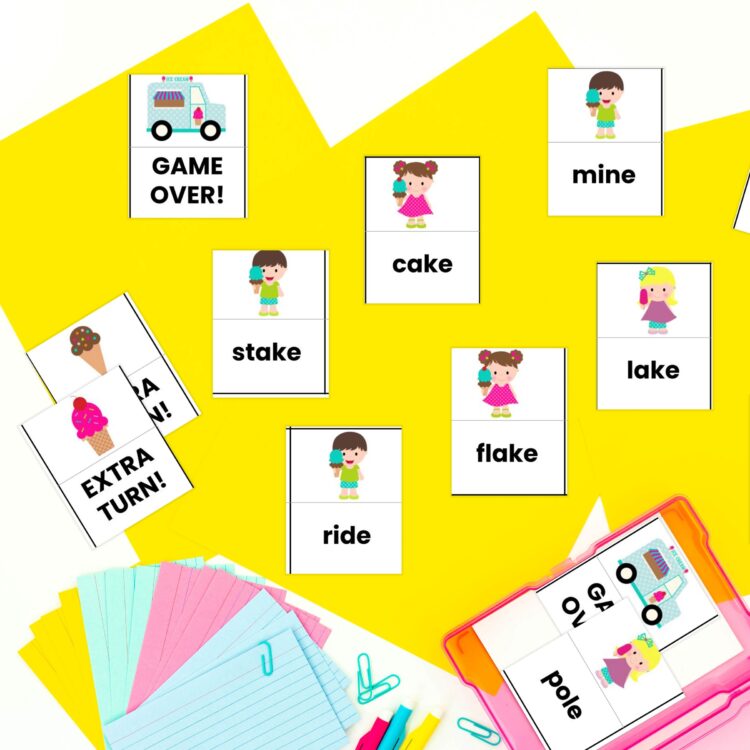
I store each of the game sets on its own case or envelope. When it’s time to play, I put everything into a bag or plastic container. To play, students draw a card and read the word, placing the card into their pile. Play continues to the next student in the group. 3 special cards are included: lose a turn, take an extra turn, and game over. For the lose a turn cards, I have students return that card to the container. When the game is over students count their cards to determine the winner.
I have 3 game templates available ready for you to customize with the phonics skills you need. Each template is available in Google Slides. All you need to do is duplicate the word card slides and print! A directions page is built in for printing. Sign up at the form to get the game templates straight to your inbox after confirmation.
SEND IT TO MY INBOX!
Submitting this form will send the Draw a Card Game Templates straight to your inbox! I will also send you some information on early literacy as time goes on.
Next step: Confirm!
You should have received an email to confirm your settings. If you don’t see the email right away, search Tales from Outside the Classroom. Then be sure to mark me as a safe sender so you find every email right away!
Once you confirm, the email with your game templates will be on its way!
Games Galore
My Games Galore series are collections of partner games reviewing targeted phonics skills. Unlike other decoding activities I offer, these phonics games are intended for independent and spiral review of the skills. Each game mixes the target skills so students are reviewing what they already know. For example, the CVC Games Galore activities include every vowel in each game rather than practice each vowel sound in isolation. These are intended for use after direct instruction in the phonics skill. I introduce them in my small group so students are familiar with the activity, but for the most part, I use these as a center activity.
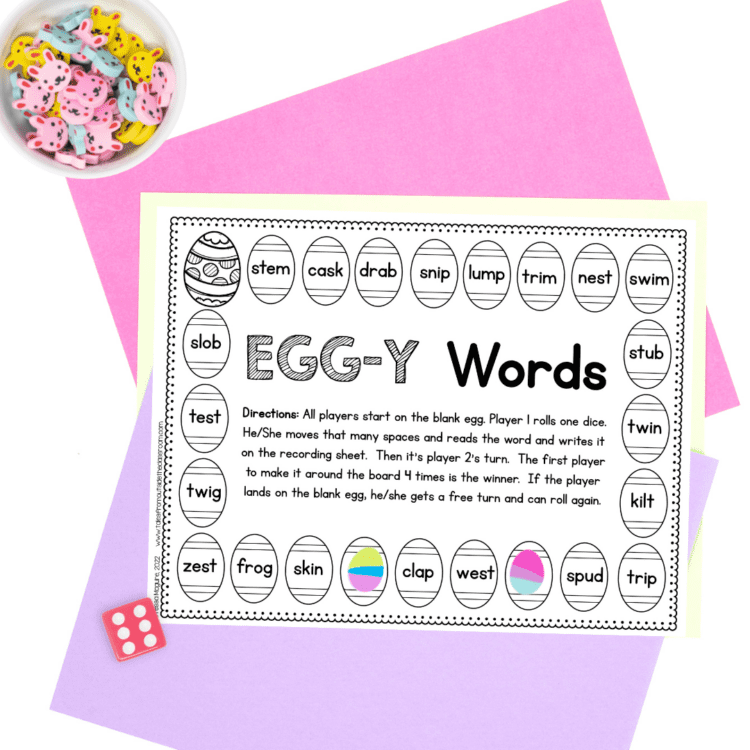
I’m adding to my collection of printable games. You can check out my Games Galore for CVC Words, Consonant Blends, & Final E Words.
Do you have other decoding activities you like to use with your students? Share in the comments below!
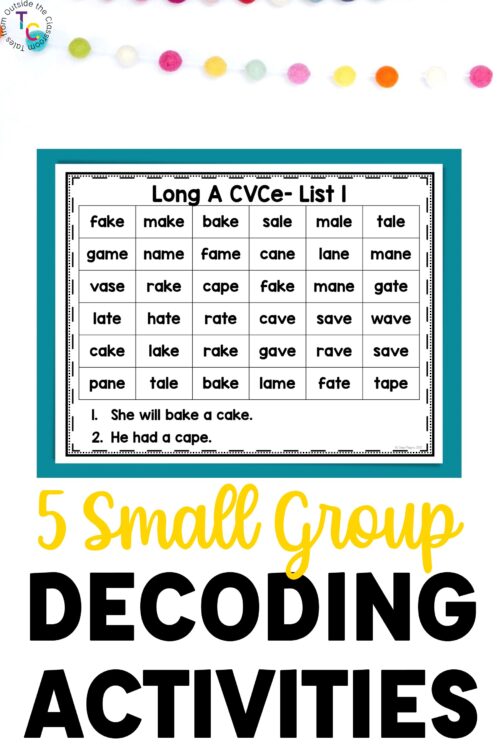
Newsletter Sign Up
Signup for my weekly-ish newsletter. I send out exclusive freebies, tips and strategies for your classroom, and more!
Please Read!
You have successfully joined our subscriber list. Please look in your e-mail and spam folder for Tales from Outside the Classroom. Often, the confirmation email gets overlooked and you're night signed up until you confirm!

Hi! I’m Tessa!
I’ve spent the last 15 years teaching in 1st, 2nd, and 3rd grades, and working beside elementary classrooms as an instructional coach and resource support. I’m passionate about math, literacy, and finding ways to make teachers’ days easier. I share from my experiences both in and out of the elementary classroom. Read more About Me.









